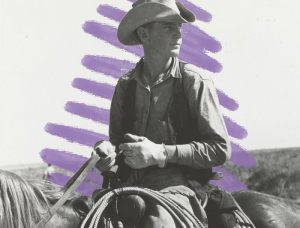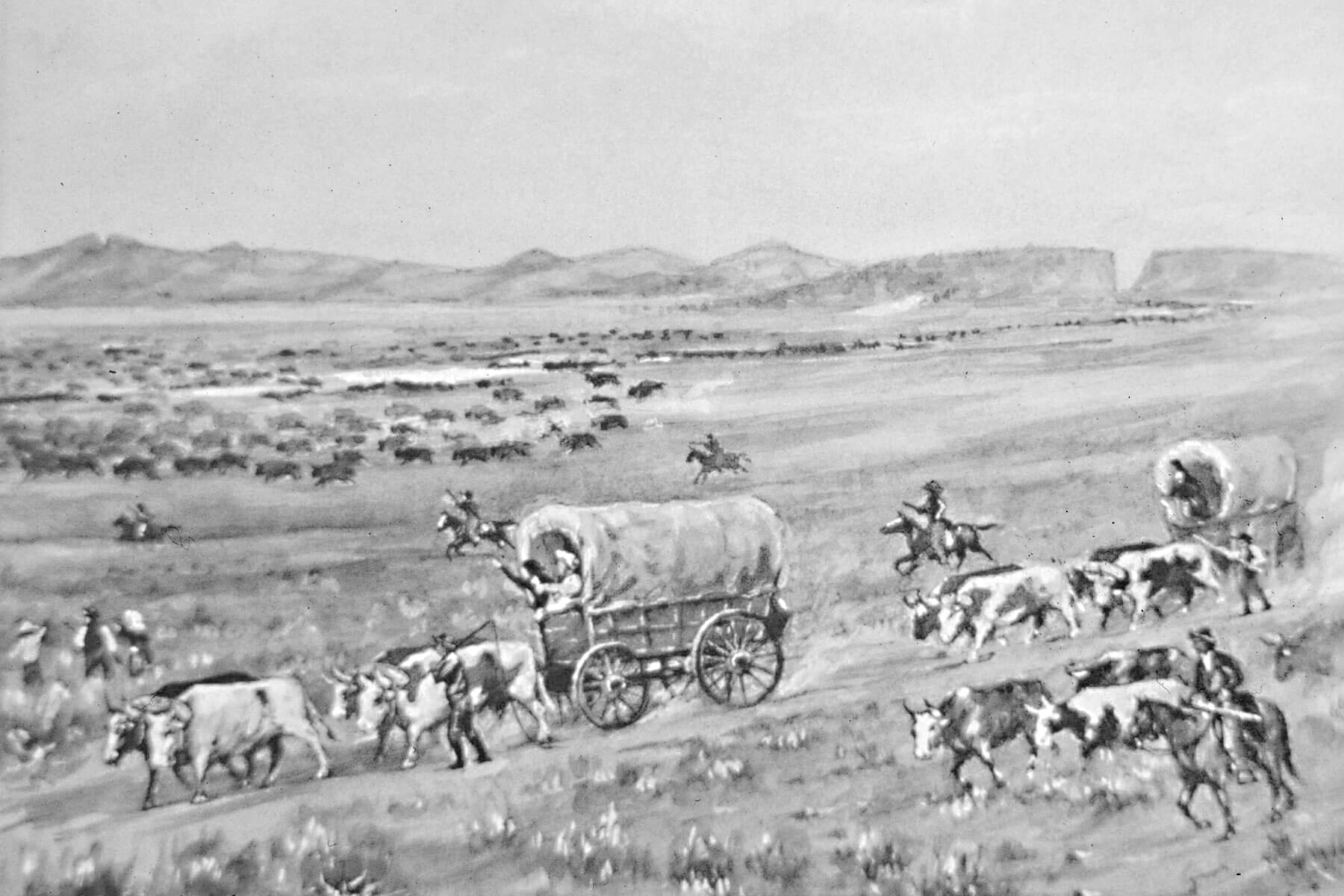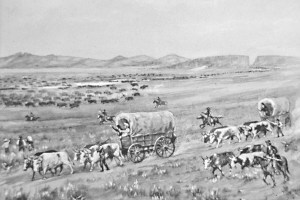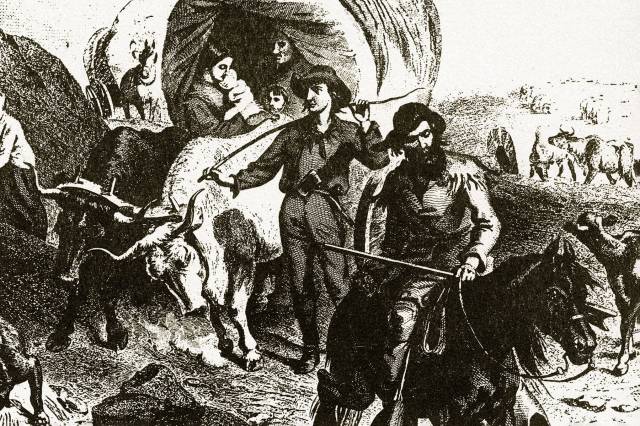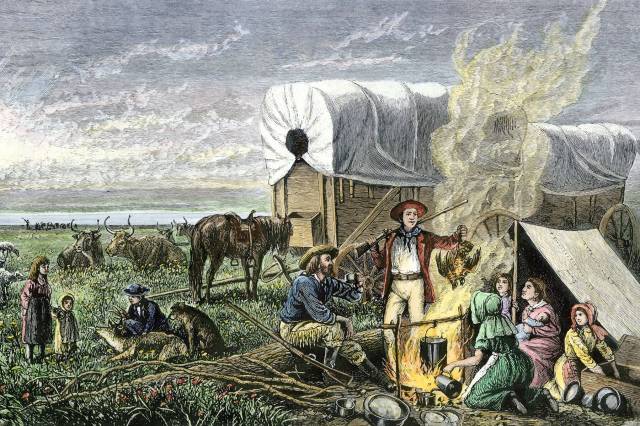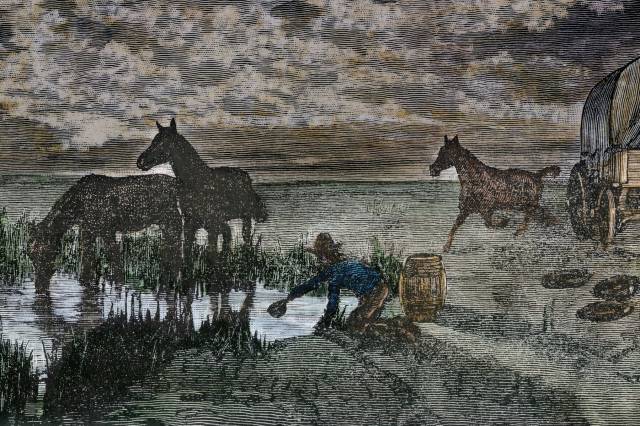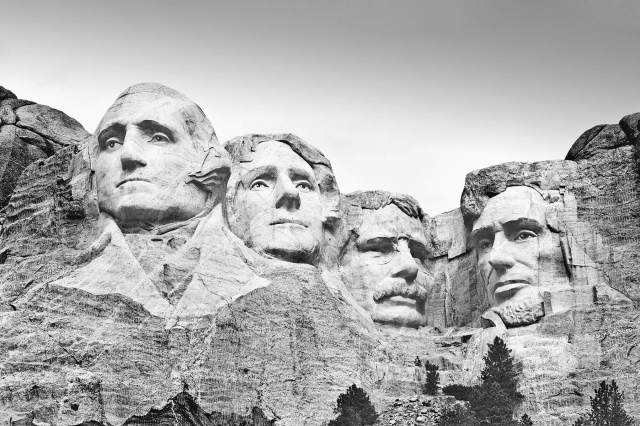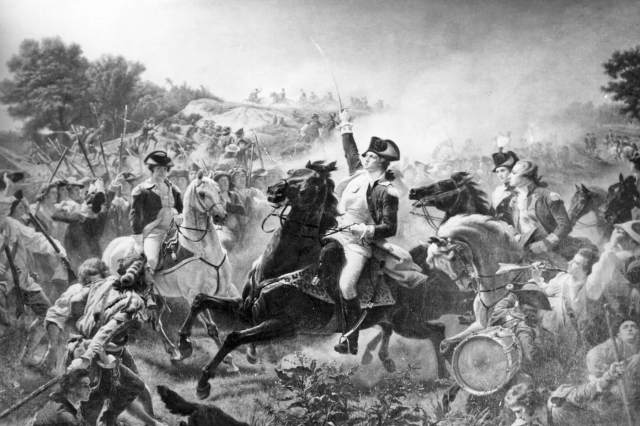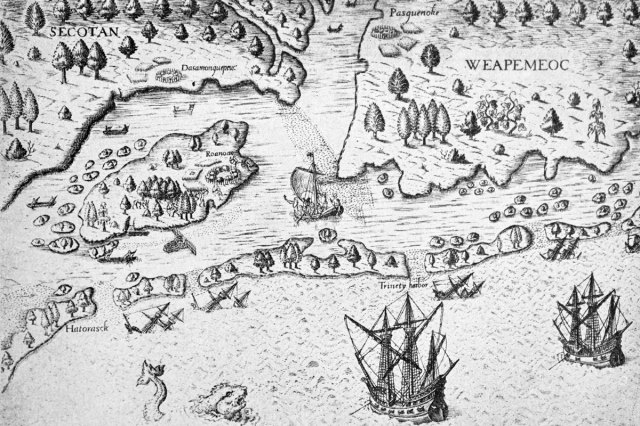A Day in the Life of a Person on the Oregon Trail
In 1843, approximately 1,000 people embarked on the arduous journey west across the young United States in the first major wagon train migration on the Oregon Trail. Spanning more than 2,000 miles from Independence, Missouri, to the promising lands of the Oregon Territory, the trail served as a lifeline for those seeking new beginnings in the American West. Each day, migrants traveled an average of 15 miles, though on a good day, anywhere from 18 to 20 miles could be covered, most of it on foot.
It took roughly four to six months to complete the journey, with harsh obstacles day in and day out, including treacherous terrain, unpredictable weather patterns, illness and injury, and the threat of danger from wildlife or hostile encounters. Of course, the intrepid travelers were prepared: A typical trail outfit consisted of one or two small, sturdy covered wagons to carry belongings and essential supplies, six to 10 oxen, and a few milk cows per family. Most families also had an abundance of basic food staples such as flour, bacon, coffee, tea, sugar, and lard, as well as hunting supplies and farm and carpentry tools such as shovels, rakes, saws, and axes.
But it wasn’t just the supplies that kept the fraught frontier voyages on track. A fixed daily schedule kept wagon trains on a steady pace, and gave travelers the best chance at making it to their destination. Some wagon trains, including the 1843 voyage, could consist of more than 100 wagons; to better control the journey, the train was split into several smaller units consisting of anywhere from four to upwards of 20 wagons and about 30 people. Here’s a look at a typical day in the life of one of these Oregon Trail travelers.
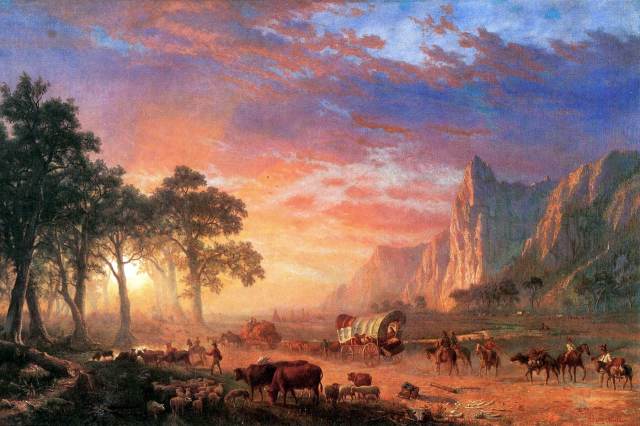
Morning
People on the frontier started their day early. At around 4 a.m., a bugle call or rifle shot would wake the camp to start another long and dusty day on the trail. Over the next hour, if the livestock had been allowed to graze throughout the night, they were rounded up and corralled in the wagon circle. By about 5 a.m., the women and children in the group would have prepared a simple but hearty breakfast: Most mornings the group had coffee, bacon, corn porridge, or cornmeal pancakes known as johnnycakes cooked over a fire. As the women washed dishes, the men finished striking and packing the campsite. They also tended to the animals, ensuring any sore limbs were wrapped or rough hides were rubbed with salve. The health of the animals was a crucial part of a successful journey.
By around 7 a.m., wagons were packed up and animals hitched, and the caravan set off after a bugle sounded and a “wagons ho” or “wagons roll” call was made. Travelers were incentivized to be on time: Ending up at the back of the caravan meant spending much of the day in the literal dust of the people and animals ahead. Often, the terrain required labor and manpower for safe passage, so men traveled ahead on horseback to clear it as needed. The rest of the group trudged slowly behind on foot as the wagons were not widely used to transport people, but rather supplies. Luzena Stanley Wilson, who traveled to California from Missouri on the Oregon Trail in 1849, said each day had a “plodding, unvarying monotony.”
